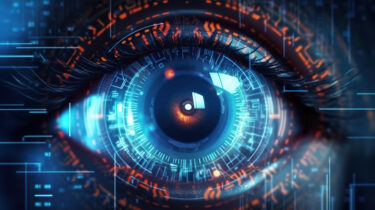When we think about the biggest barriers to accessing online content that most of us face, paywalls, and language barriers may be the first to come to mind.
However, for somebody with a hearing disability, the list grows larger every day, with each new website, or mobile app, not designed for them to navigate.
Over five percent of the world’s population – or 466 million people – has disabling hearing loss, yet these individuals have to adapt to a web they can’t fully experience.
Deaf people have traditionally been encouraged to adapt to the lifestyle of hearing individuals, which explains the lack of accessibility to online resources.
We see this translate to online arenas, with examples such as lack of captions, subtitles, transcripts, and readable text structures.
At its base, restricting entrance to websites, platforms, and applications essential to our everyday life, like governmental and financial services, education, and many more, leaves five percent of the world population without access to these spaces.
Luckily, we are seeing more and more actions challenging that old-school practice in the form of legislation that will hopefully empower the deaf community and their right to make the most of their time online.
What is the idea behind these changes, the current challenges, and how will they impact the platforms that we use daily?
The Right to Access the Web
The process of allowing everyone to access and function within any online platform is called digital accessibility, and it’s detailed in Article 9 of the United Nations Convention on the Rights of Persons with Disabilities (UNCRPD).
This agreement sets out what countries have to do to make sure that disabled people have the same rights as everybody else, including, of course, the accessibility to the internet and new technologies.
With a more direct approach, the European Union (EU) put in place the EU Web Accessibility directive a couple of years ago. The purpose of this mandate is to make all websites accessible for everyone on December 22, 2020. Changes enacted and enforced by the EU in regards to the internet are generally adopted worldwide.
Since 2018, every time you visit a website, you get asked whether or not you agree with their cookie policy, because in 2018, the EU rolled out a set of regulations, which prompted companies all over the globe to change their privacy policy.
The WHO estimates that by 2050 over 900 million people – or one in every 10 individuals – will have disabling hearing loss.
Many people have hearing impairments and, in the future, many of us are going to suffer some kind of hearing loss, so we’ll probably all depend on initiatives and regulations that make online platforms more accessible.
How to Make a Platform More Accessible
Structure of content
People with hearing loss are very visual, so having a screen or written document to share information can go a long way.
Whether you’re developing a website or just writing content, make sure to use clear fonts and don’t make your content too colorful or overwhelming, so it’s as legible as possible.
The assembly of headings, paragraphs, and titles are crucial for digital users to access content and what may be a slight discomfort to some, could make a huge difference to a person with hearing loss.
Subtitles and captions
Lack of text that supports digital media is one of the biggest hurdles someone with a hearing disability faces online. Platforms like YouTube offer autogenerated subtitles, although the accuracy of the feature leaves a lot to be desired. Content creators can upload subtitles and some major video streaming websites have incorporated captions to their services, but there’s a lot of room for improvement. For example, companies could make sure they add sign language interpretation or at least captions to their corporate videos and general content.
Inclusion of text to support audio
A good portion of online content, like podcasts and webinars, comes in only audio formats. Communities form around them to discuss all kinds of topics. It’s crucial to provide relevant information, like transcript and descriptions, so that these formats are accessible to everyone. It also makes website navigation more practical for people that rely on visual content. Transcript and descriptions could be adapted into existing applications or provide external links to support platforms.
Small Changes Add Up
While a lot of the responsibility behind accessibility online relies on companies and web developers, there are many steps we as individuals can take to support the Deaf community in our everyday lives.
These include inviting an interpreter to conferences or having a sign language interpretation app on our phones. By being more conscious, you include people who are traditionally marginalized but also reach a bigger audience.
We have traditionally left sign language to the Deaf community. Learning a language is not an easy task, but thanks to technology nowadays we have resources like mobile applications that allow us to easily communicate in sign language, even if we don’t understand it ourselves.
There’s a lot of work to be done to make the digital world an accessible one. There is a need for fundamental changes in how we view app and web development to foster inclusion.
Let us not forget that having access to most services and tools online is a privilege because for a lot of people the platform was designed with them in mind.
Disclosure: This story is brought to you through an ESPACIO portfolio company.
Brain-computer interface helps turn brainwave patterns into speech












